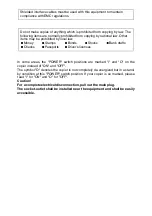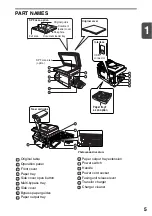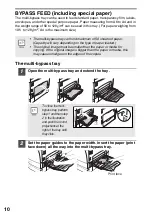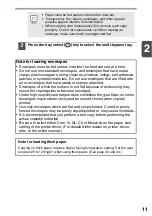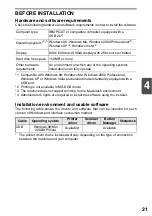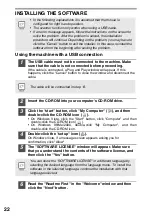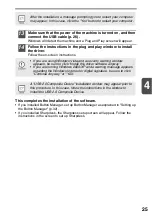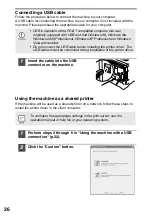
11
2
3
Press the tray select (
) key to select the multi-bypass tray.
•
Paper must be fed narrow side into the feed slot.
•
Transparency film, labels, envelopes
,
and other special
purpose papers must be fed individually.
•
When copying onto transparency film, remove each copy
promptly. Do not let copies stack up. When loading an
envelope, make sure that it is straight and flat.
Note for loading envelopes
• Envelopes must be fed narrow side into the feed slot one at a time.
• Do not use non-standard envelopes, and envelopes that have metal
clasps, plastic snappers, string closures, windows, linings, self-adhesive,
patches or synthetic materials. Do not use envelopes that are filled with
air or envelopes that have labels or stamps attached.
• Envelopes of which the surface is not flat because of embossing may
cause the copies/prints to become smudged.
• Under high humidity and temperature conditions the glue flaps on some
envelopes may become sticky and be sealed closed when copied/
printed.
• Use only envelopes which are flat and crisply folded. Curled or poorly
formed envelopes may be poorly copied/printed or may cause misfeeds.
• It is recommended that you perform a test copy before performing the
actual copied/printed job.
• Be sure to select either Com 10, DL, C5 or Monarch on the paper size
setting of the printer driver. (For detailed information on printer driver,
refer to the online manual.)
Note for loading thick paper
Copying on thick paper requires higher fusing temperature setting. Set the user
program 29 to "2 (High)" when using thick paper. (See page 43 and 44.)


